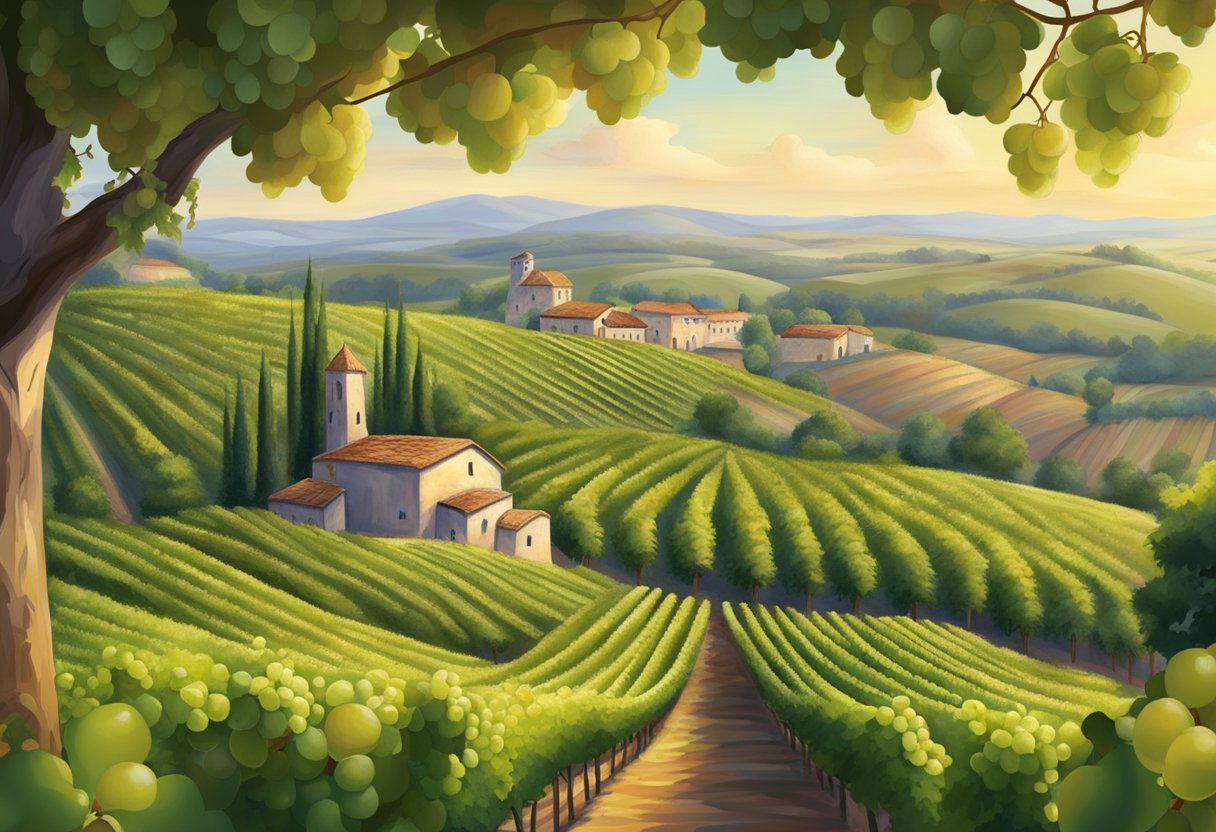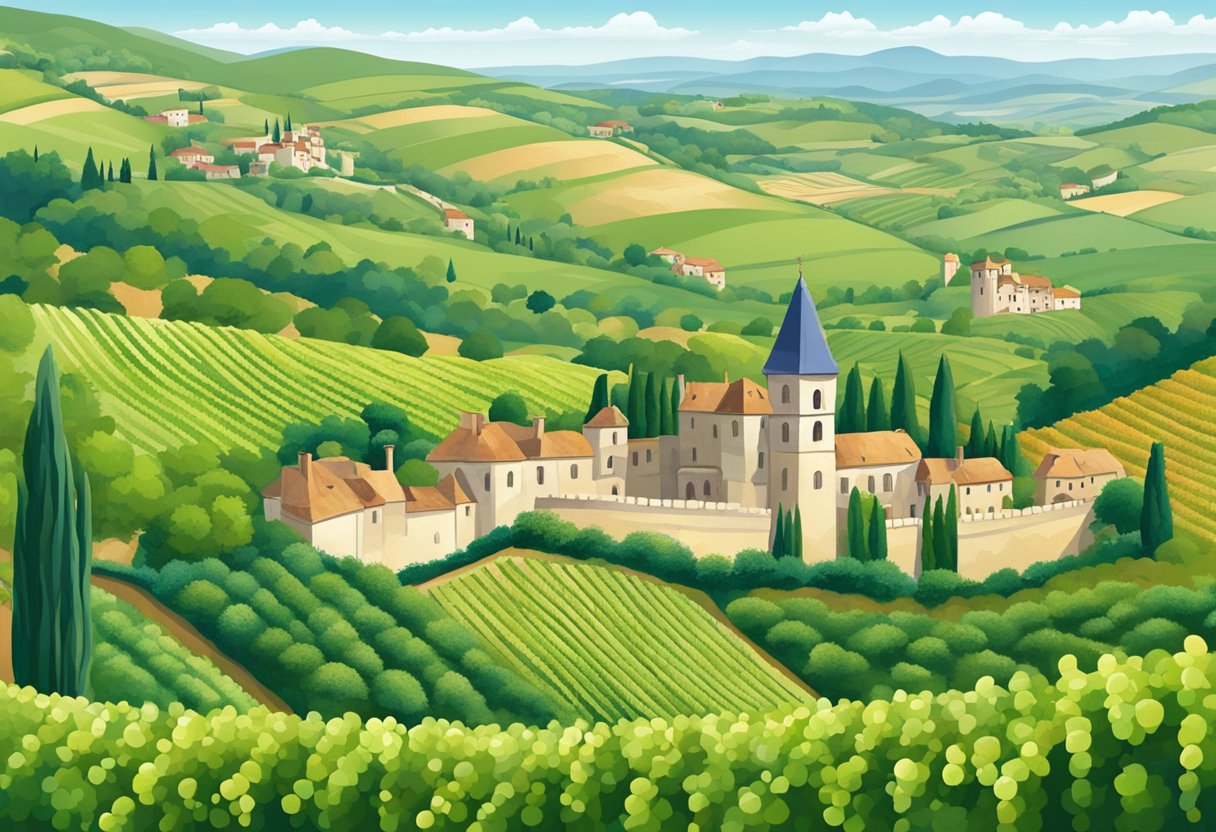French Burgundy Wine: A Guide to the Finest Wines from the Burgundy Region
French Burgundy wine is one of the most famous and sought-after wines in the world. It is a red wine made from Pinot Noir grapes and a white wine made from Chardonnay grapes, grown in the Burgundy region of eastern France. The region is known for its exceptional terroir, which produces wines with unique flavors and aromas.

Burgundy wine is produced in five primary wine-producing areas: Chablis, Côte de Nuits, Côte de Beaune, Côte Chalonnaise, and Mâconnais. Each area is made up of different villages, also called communes, and each commune has its own unique terroir, which contributes to the character of the wine. The wines produced in Burgundy are often described as elegant, complex, and nuanced, with a wide range of flavors and aromas depending on the specific terroir.
French Burgundy wine has a long and storied history, dating back to the Roman era. Over the centuries, the region has become known for producing some of the finest wines in the world. Today, Burgundy wine is still highly prized by wine enthusiasts and collectors around the globe, and it remains an important part of French culture and heritage.
Understanding Burgundy Wines
https://www.youtube.com/watch?v=CNQsaRL5v1g&embed=true
Burgundy wines are some of the most prized and sought-after wines in the world. They are produced in the Burgundy region of France, which is located in the eastern part of the country. Burgundy wines are made from two main grape varieties: Chardonnay and Pinot Noir.
The Grapes
Chardonnay is a white grape variety that is used to produce white Burgundy wines. It is known for its versatility and can produce a wide range of wine styles, from light and crisp to rich and full-bodied. Pinot Noir, on the other hand, is a red grape variety that is used to produce red Burgundy wines. It is a difficult grape to cultivate, but when done correctly, it can produce some of the most complex and elegant wines in the world.
Classification of Burgundy Wines
Burgundy wines are classified based on the location of the vineyard where the grapes are grown. The highest classification is Grand Cru, which refers to vineyards that produce the highest quality grapes. Premier Cru vineyards are the next level down and produce wines of slightly lower quality than Grand Cru vineyards. Village wines are produced from grapes grown in a specific village or commune, while regional wines are produced from grapes grown in a larger region.
The Terroir
The terroir, or the unique characteristics of the soil, climate, and geography of the Burgundy region, is a major factor in the quality of Burgundy wines. The soil in Burgundy is incredibly diverse, with different vineyards having different soil types, which can greatly affect the flavor and character of the wine. The climate in Burgundy is also unique, with cool temperatures and a long growing season, which allows the grapes to ripen slowly and develop complex flavors.
In conclusion, Burgundy wines are some of the most complex and elegant wines in the world. They are produced from two main grape varieties, Chardonnay and Pinot Noir, and are classified based on the location of the vineyard. The terroir, or unique characteristics of the soil and climate in the Burgundy region, is a major factor in the quality of the wine.
Key Wine Regions of Burgundy
https://www.youtube.com/watch?v=XEZwbYZgdY0&embed=true
Burgundy is considered one of the most prestigious wine regions in the world, and it is home to some of the most expensive and sought-after wines. Burgundy wines are known for their unique quality, flavor, and aroma. The region is divided into several sub-regions, each with its own distinct characteristics. Here are the key wine regions of Burgundy:
Côte d'Or
Côte d'Or is the heart of the Burgundy wine region and is home to some of the most famous and expensive wines in the world. It is divided into two sub-regions, the Côte de Nuits and the Côte de Beaune. The Côte de Nuits is known for its red wines, which are made from Pinot Noir grapes. The Côte de Beaune produces both red and white wines, with Chardonnay being the most commonly used grape for white wine.
Chablis
Chablis is a sub-region of Burgundy that is located in the northernmost part of the region. It is known for its dry white wines, which are made from Chardonnay grapes. The soil in Chablis is very unique, with a high concentration of limestone, which gives the wine a distinct minerality.
Mâconnais
Mâconnais is a sub-region of Burgundy that is located in the southern part of the region. It is known for its white wines, which are made from Chardonnay grapes. The wines from Mâconnais are typically less expensive than those from other sub-regions of Burgundy but are still of high quality.
Beaujolais
Beaujolais is a sub-region of Burgundy that is located to the south of the region. It is known for its red wines, which are made from Gamay grapes. The wines from Beaujolais are typically lighter and fruitier than those from other sub-regions of Burgundy.
In conclusion, Burgundy is a diverse wine region with a rich history and unique characteristics. Each sub-region has its own distinct style and flavor, making Burgundy wines some of the most sought-after in the world.
Characteristics of Burgundy Wines

Burgundy is a region in France that produces some of the most sought-after and evocative wines in the world. Burgundy wines are known for their complexity, balance, and elegance. They are made from two grape varieties: Pinot Noir for red wines and Chardonnay for white wines.
Red Wines
Burgundy red wines are known for their fruitiness, acidity, and aromas. They are typically light to medium-bodied and have a young and fresh style. The tannins in Burgundy red wines are usually light and supple, which gives them a delicate and elegant character. The style of Burgundy red wines is influenced by the terroir, which gives them a unique complexity and minerality.
White Wines
Burgundy white wines are known for their balance, complexity, and aromas. They are typically medium-bodied and have a young and fresh style. The acidity in Burgundy white wines is usually high, which gives them a crisp and refreshing character. The style of Burgundy white wines is influenced by the terroir, which gives them a unique minerality and complexity.
Rosé and Sparkling Wines
Burgundy also produces rosé and sparkling wines, although they are less famous than their red and white counterparts. Burgundy rosé wines are typically light-bodied and have a fresh and fruity character. Burgundy sparkling wines are made using the traditional method and are known for their delicate bubbles and crisp acidity.
Overall, Burgundy wines are known for their elegance, complexity, and balance. The aromas and flavors of Burgundy wines are influenced by the terroir, which gives them a unique character. Oak and spice are sometimes used in the production of Burgundy wines, but they are used sparingly to ensure that the fruit and terroir shine through.
Notable Vineyards and Producers

Domaine de la Romanée-Conti
Domaine de la Romanée-Conti is one of the most famous and revered vineyards in the entire world. It is located in the Côte de Nuits region of Burgundy, France. The vineyard is known for its Grand Cru vineyards, which include Romanée-Conti, La Tâche, Romanée-Saint-Vivant, Richebourg, Echézeaux, and Grands-Echézeaux, among others. The wines produced at this vineyard are highly sought after and command high prices at auctions and in the secondary market.
Louis Jadot
Louis Jadot is a well-known producer of Burgundy wines, with a history dating back to 1859. The company produces a wide range of wines, including Chardonnay and Pinot Noir. Some of the most notable wines produced by Louis Jadot include Montrachet, Meursault, Corton, Musigny, Volnay, Pommard, Puligny-Montrachet, Chambolle-Musigny, and Clos de Vougeot. Louis Jadot also produces wines from other regions of France, such as Chassagne-Montrachet and Pouilly-Fuissé.
Louis Jadot is known for its commitment to quality and its use of traditional winemaking techniques. The company produces wines that are elegant, complex, and well-balanced. Louis Jadot wines are highly regarded by wine critics and enthusiasts alike.
In conclusion, Domaine de la Romanée-Conti and Louis Jadot are two of the most notable vineyards and producers in Burgundy, France. Their wines are highly sought after and command high prices. Both vineyards are known for their commitment to quality and their use of traditional winemaking techniques.
Understanding Burgundy Wine Labels

Burgundy wine labels can be confusing to the uninitiated, but they contain a wealth of information about the wine inside the bottle. Understanding the different terms and designations used on Burgundy wine labels can help you choose the right wine for your taste and budget.
Appellations and AOCs
Burgundy wines are classified by their appellation d'origine contrôlée (AOC), which indicates the region where the grapes were grown and the specific rules that govern the production of the wine. Burgundy has several AOCs, ranging from broad regional appellations like Bourgogne to smaller village and vineyard-specific appellations like Gevrey-Chambertin or Chablis.
Soil and Climate
The quality and character of Burgundy wines are heavily influenced by the region's unique soil and climate. The region's limestone-rich soils, which are often mixed with clay or marl, help to give Burgundy wines their distinctive minerality and complexity. The cool continental climate, with its long, slow ripening season, allows the grapes to develop complex flavors and aromas.
Regional Wines
Burgundy is known for producing some of the world's most expensive wines, particularly those from the region's grand cru vineyards. However, the region also produces a range of more affordable regional wines, including Bourgogne Rouge and Bourgogne Blanc, which offer excellent value for money.
Crémant de Bourgogne
In addition to still wines, Burgundy is also known for producing sparkling crémant de Bourgogne, which is made using the same traditional method as Champagne. Crémant de Bourgogne is typically made from Chardonnay and Pinot Noir grapes, although other varieties like Aligoté and Gamay can also be used.
In conclusion, understanding Burgundy wine labels can be challenging, but it is essential for anyone interested in exploring the region's rich and diverse wines. By learning about the region's appellations, soils, and climate, as well as its more affordable regional wines and sparkling crémant, wine lovers can gain a deeper appreciation for the unique character and quality of Burgundy wines.



Member discussion